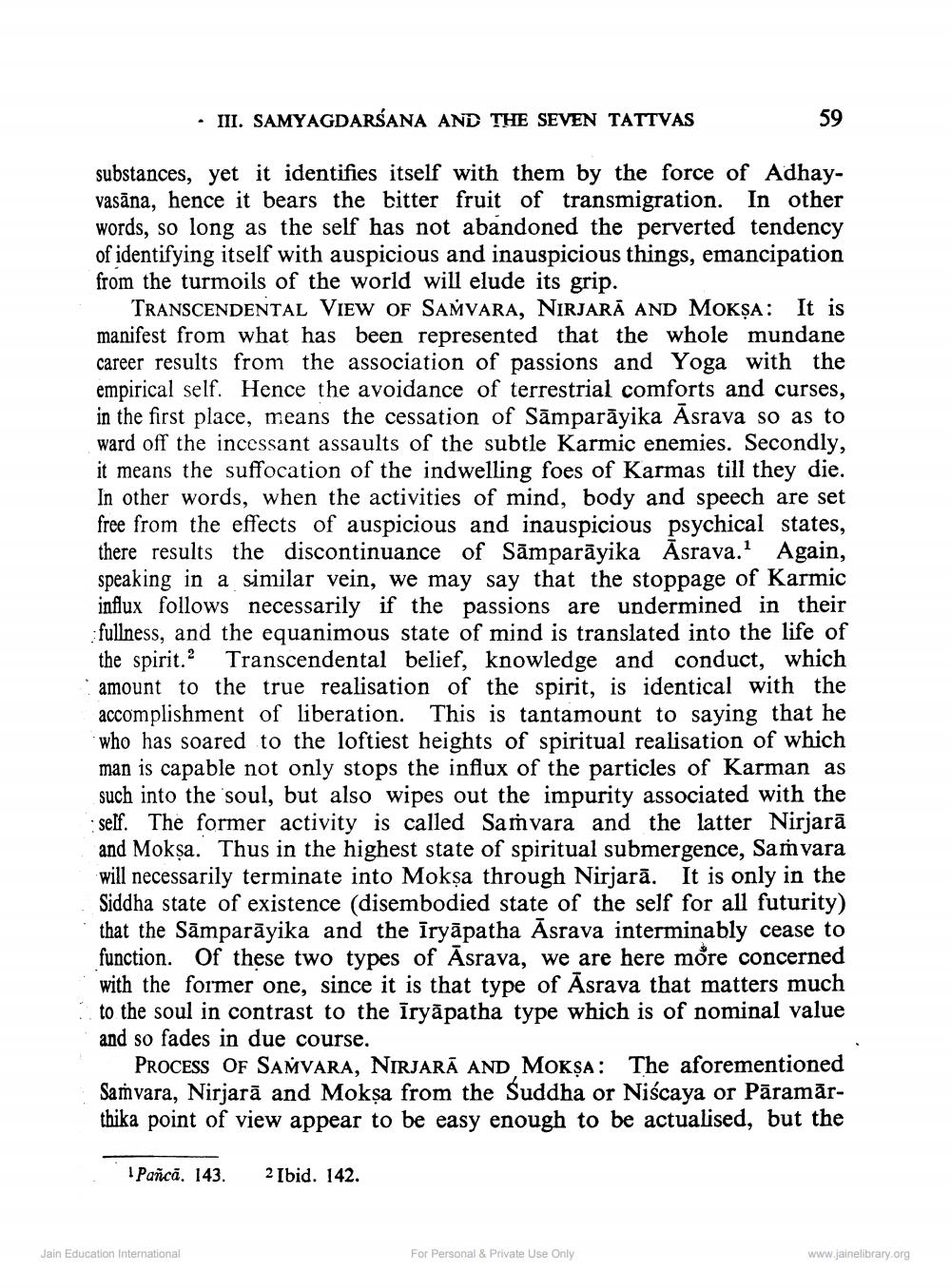________________
• III. SAMYAGDARSANA AND THE SEVEN TATTVAS
59
substances, yet it identifies itself with them by the force of Adhayvasāna, hence it bears the bitter fruit of transmigration. In other words, so long as the self has not abandoned the perverted tendency of identifying itself with auspicious and inauspicious things, emancipation from the turmoils of the world will elude its grip.
TRANSCENDENTAL VIEW OF SAMVARA, NIRJARĀ AND MOKȘA: It is manifest from what has been represented that the whole mundane career results from the association of passions and Yoga with the empirical self. Hence the avoidance of terrestrial comforts and curses, in the first place, means the cessation of Sāmparāyika Asrava so as to ward off the incessant assaults of the subtle Karmic enemies. Secondly, it means the suffocation of the indwelling foes of Karmas till they die. In other words, when the activities of mind, body and speech are set free from the effects of auspicious and inauspicious psychical states, there results the discontinuance of Sāmparāyika Asrava. Again, speaking in a similar vein, we may say that the stoppage of Karmic influx follows necessarily if the passions are undermined in their fullness, and the equanimous state of mind is translated into the life of the spirit. Transcendental belief, knowledge and conduct, which amount to the true realisation of the spirit, is identical with the accomplishment of liberation. This is tantamount to saying that he who has soared to the loftiest heights of spiritual realisation of which man is capable not only stops the influx of the particles of Karman as such into the soul, but also wipes out the impurity associated with the self. The former activity is called Samvara and the latter Nirjarā and Moksa. Thus in the highest state of spiritual submergence, Samvara will necessarily terminate into Moksa through Nirjarā. It is only in the Siddha state of existence (disembodied state of the self for all futurity) that the Sāmparāyika and the īryāpatha Asrava interminably cease to function. Of these two types of Asrava, we are here mỏre concerned with the former one, since it is that type of Asrava that matters much to the soul in contrast to the iryāpatha type which is of nominal value and so fades in due course.
PROCESS OF SAMVARA, NIRJARĀ AND MOKȘA: The aforementioned Samvara, Nirjarā and Moksa from the Suddha or Niscaya or Pāramārthika point of view appear to be easy enough to be actualised, but the
Pañcā. 143.
2 Ibid. 142.
Jain Education International
For Personal & Private Use Only
www.jainelibrary.org




